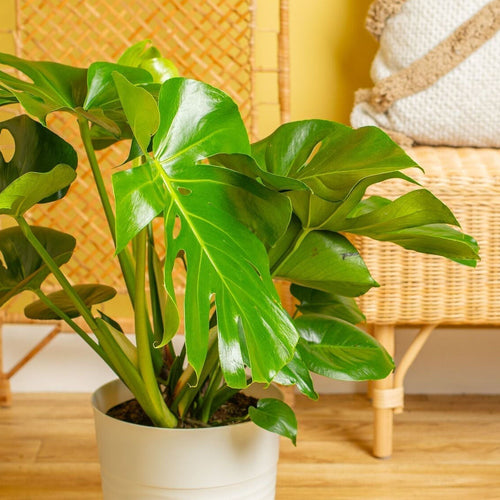By Justin Hancock
Vinca is a classic, old-school plant that’s earned its place in our gardens. While most vinca varieties are easy to grow, it's important to choose the best for your space because there are annual and perennial types. Here’s a guide to selecting the best varieties for you yard -- and choosing the healthiest vinca plants available at your local store.
The first thing to know about vinca is that there are actually two different categories of plants that commonly go by this name – annual (tropical) and perennial (hardy) vinca.

Annual Vinca
If you’re looking for big, bold color for sunny spots, the annual vinca varieties are probably for you. These plants have the botanical name Catharanthus and are bred from a heat- and drought-tolerant, sun-loving species from Madagascar.
These plants typically have pinwheel-shaped flowers in festive shades of lavender, pink, red, and white. They thrive both in garden beds and borders, as well as container gardens and their low-water, heat-loving nature have made them popular plants for just about every climate.
Plant breeders have developed both upright-growing varieties and trailing varieties. Upright varieties can grow between 1 and 2 feet tall, depending on variety, and ideal for mass plantings; mixing with other heat-loving annuals such as angelonia and pentas; or mixing with perennials to provide constant color in summer while the perennials cycle in and out of bloom.
Trailing vinca varieties are particularly well-suited for hanging baskets and container gardens, but can also be good annual groundcovers in beds and borders.
Most annual vinca varieties are good for attracting bees, butterflies, hummingbirds, and other pollinators. And they’re also typically deer and rabbit resistant.
Varieties of Annual Vinca
There are many series of annual vinca available, many with a full range of colors. Some that have done particularly well in our Trial Garden include:
Cora:
The Cora vinca collection features many colors, and both trailing and upright varieties. They’re known for their disease resistance.
Soiree Kawaii:
Kawaii varieties offer a very different look; they produce many smaller flowers, giving the plants more of a wildflower look.
Valiant:
Valiant vincas are large plants with extra-large flowers that are perfect for planting an eye-catching display.
Vitesse:
Easy-care and beautiful, Vitesse vincas are especially easy to grow.

Perennial Vinca
Perennial vincas are typically low-growing groundcovers that thrive in shaded or partly shaded spots. They have the botanical name Vinca and are bred from species native to Europe. There are two main species grown: Vinca major and V. minor.
Perennial vinca varieties have pinwheel-shaped springtime flowers in shades of lavender, purple, and white. Many offer outstanding variegated foliage that provides year-round interest (or nearly year-round in especially cold-winter areas). Because they’re shade-loving groundcovers, perennial vincas are particularly well suited for woodland gardens, planting along slopes, and as a turf alternative. It typically stays less than 6 inches tall and can spread 4 feet or more. Vinca minor is hardy in Zones 4-8.
As you might guess from the name, Vinca major is larger than its cousin. V. major is often used in container gardens where its large trailing foliage adds a softness to hanging baskets and mixed pots. It is also not as winter hardy; Vinca major survives in Zones 7-9.
Note: Vinca minor is considered invasive in some areas; check for local restrictions before planting it.
Shopping for Vinca
Once you know the type of vinca you’re looking form, we have tips to make sure you get the best-quality plants from your local garden center. When shopping for vinca, make sure plants have lush, dark green leaves. Watch out for plants that have pale green or yellowing leaves; this is often a sign that the plant was stressed. (One common form of stress is overwatering; vinca, especially the annual varieties, hate having their roots stay wet for extended periods.)
It’s typically better to buy plants that aren’t in bloom -- that way the vinca can put more energy into getting established in your outdoor space rather than splitting its energy between becoming established and blooming. But, because vinca comes in a range of colors and the plant tags often get put in the wrong pots buy hurried shoppers, you may want to select plants that are flowering to get the exact shades you want.
Another step to take to ensure you’re getting a healthy plant is to gently pull the plant out of its pot. The roots should be firm and white; if they’re yellow or brown and soggy, the vinca may be suffering from root rot. Also look to see that the plant isn’t too rootbound, with roots filling the soil and densely circling the perimeter of the pot. The more rootbound the vinca, the more likely it is to be stressed.

















